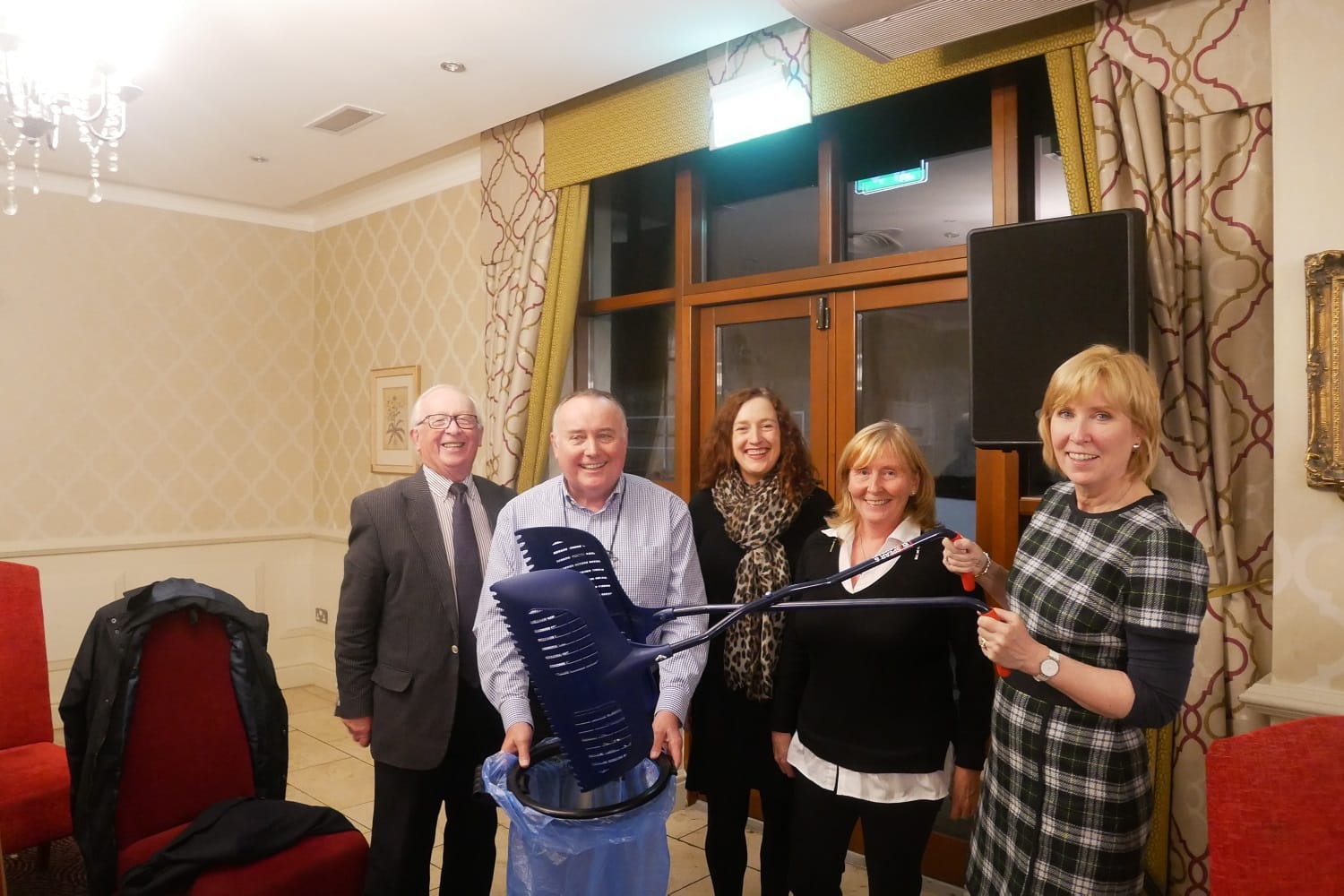What would become of the Civic Offices on Wood Quay if the council relocates?
After The Currency reported the idea of the council moving its HQ, councillors were talking about and thinking through the pros and cons and implications.
The residents’ association has teamed up with the council to run a pilot project, turning the leaves they collect into compost and mulch instead.

Una Caulfield says her 93-year-old mother, who lives with her, has trouble getting around the neighbourhood sometimes, once autumn comes.
“She wouldn’t be able to walk to mass some days because the leaves were so slippery,” says Caulfield, a committee member of Griffith Avenue and District Residents’ Association.
Other older residents in the area face the same challenges. “There is a double line of trees on Griffith Avenue and we get four times as many leaves as normal,” she says.
Last year, the residents’ association organised the community to gather the slippy fallen leaves, and bag them up for the council to collect.
Now, they’re launching a pilot project with Dublin City Council to try to use them differently – to turn them into leaf mould compost, which is sometimes dubbed “gardeners’ gold”.
Leaves are a resource that is normally wasted, says Billy Creevy, a Tús supervisor in the Greenview Community Garden in Finglas, which is also a partner in the project.
“If this is a success it could be rolled out across Dublin and maybe nationwide,” Creevy says. “It’s a simple idea – it’s not complicated and could have a practical benefit to individuals and communities.”
Householders can pick up special plastic bags from Dublin City Council’s offices and fill them with leaves for the council to collect.
Last winter, Caulfield and her colleagues in the residents’ association got those bags for neighbours – to save them a trip to the council’s offices on Sean McDermott Street, since many are elderly.
Lots of local residents chipped in. “People were very good collecting the leaves,” she says.
Caulfield says she encouraged residents to give the leaves to the council, as she assumed they would then be composted. “We were horrified when we discovered it was all going to landfill.”
Together with Dublin City Council, the North West Area Partnership and Greenview Community Garden, they decided to try to change that.
Compost expert Craig Benton – aka “Dr Compost” – put together a pilot project, to convert the nuisance leaves to mulch and compost instead.
“Dublin City Council are currently in the process of putting in place a system to ensure that all leaves collected by Dublin City Council will be composted,” says a spokesperson for the council.
It is incredibly easy to turn leaves into mulch, says Caulfield. Take chicken wire and wrap it into an open wire cage, she says. “You can put 20 to 30 bags of leaves into it.”
For their neighbourhood effort, Trinity College Dublin donated the wire.
To get the project moving, the residents’ association is making up and delivering cages in their area – along with grabbers to help householders’ gather leaves.
More than 50 households have asked for the cages, says Caulfield.
Dublin City Council workers, meanwhile, have said they will clear all the leaves from the verges and pathways and take them to the Greenview Community Garden – where Billy Creevy is making a giant cage.
Some leaves on the road are too dirty to compost, he says. “But leaves in peoples’ gardens and the footpath are perfect.”
Householders can make their own cages and pop the leaves in, he says. “Keep them wet and let the air circulate and natural biological processes will break down the leaves.”

Benton says that you need to keep the leaf mulch wet because the composting organisms live in the moisture.
Since the cages are open and Dublin gets plenty of rain that shouldn’t prove too difficult, he says. During summer heatwaves, you might need to wet them with the sprinklers a couple of times, he says.
Patience is the next ingredient. One year in, the leaves become a leaf-mould mulch, says Benton. It’s good to lay that on the surface of soil to keep the weeds away.
Persevere for another year, though, and then you get “lovely, fluffy compost, very rich”, he says. That can be mixed with soil in the garden or made into a potting mix of one part compost and two parts soil.
That compost will discourage weeds too. “Sometimes compost has weeds or flowers which may survive the composting process,” says Benton. “But the leaves won’t have any so this makes a very lovely weed-free compost.”